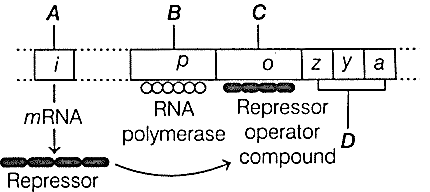Embibe Experts Solutions for Chapter: Biomolecules, Exercise 4: EXERCISE-4
Embibe Experts Chemistry Solutions for Exercise - Embibe Experts Solutions for Chapter: Biomolecules, Exercise 4: EXERCISE-4
Attempt the practice questions on Chapter 29: Biomolecules, Exercise 4: EXERCISE-4 with hints and solutions to strengthen your understanding. Beta Question Bank for Engineering: Chemistry solutions are prepared by Experienced Embibe Experts.
Questions from Embibe Experts Solutions for Chapter: Biomolecules, Exercise 4: EXERCISE-4 with Hints & Solutions
Identify and .

Glucose and fructose are both reducing sugars. Why is sucorse regarded as a non-reducing sugar?
(i) Name the type of linkages responsible for the formation of primary and secondary structures of proteins.
(ii) On electrolysis in acidic solution, -amino acids migrate towards cathode while in alkaline medium, they migrate towards anode. Explain.
(iii) What are essential and non-essential amino acids. Give two example of each.
Glycine exist as a dipolar ion, while anthranilic acid does not. Explain.
Compound , , is oxidized by bromine water into a monobasic acid and also reduces Tollen's reagent and Fehling's solution. It also responds to the following reactions. Identify the compound .

What is a peptide linkage? What is the geometry and bond lengths in a peptide molecule?
When the ketohexose, fructose is treated with phenyl hydrazine it produces an osazone that is identical with the one prepared from either glucose or mannose. How is the configuration of fructose related to those of glucose and mannose?
